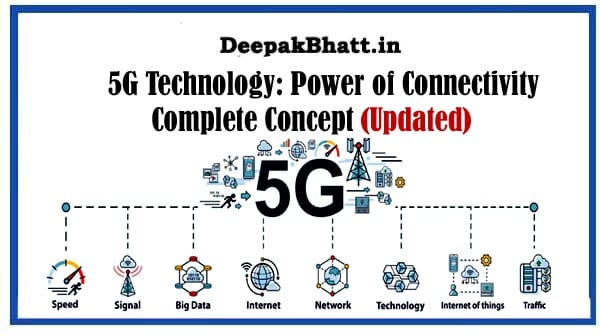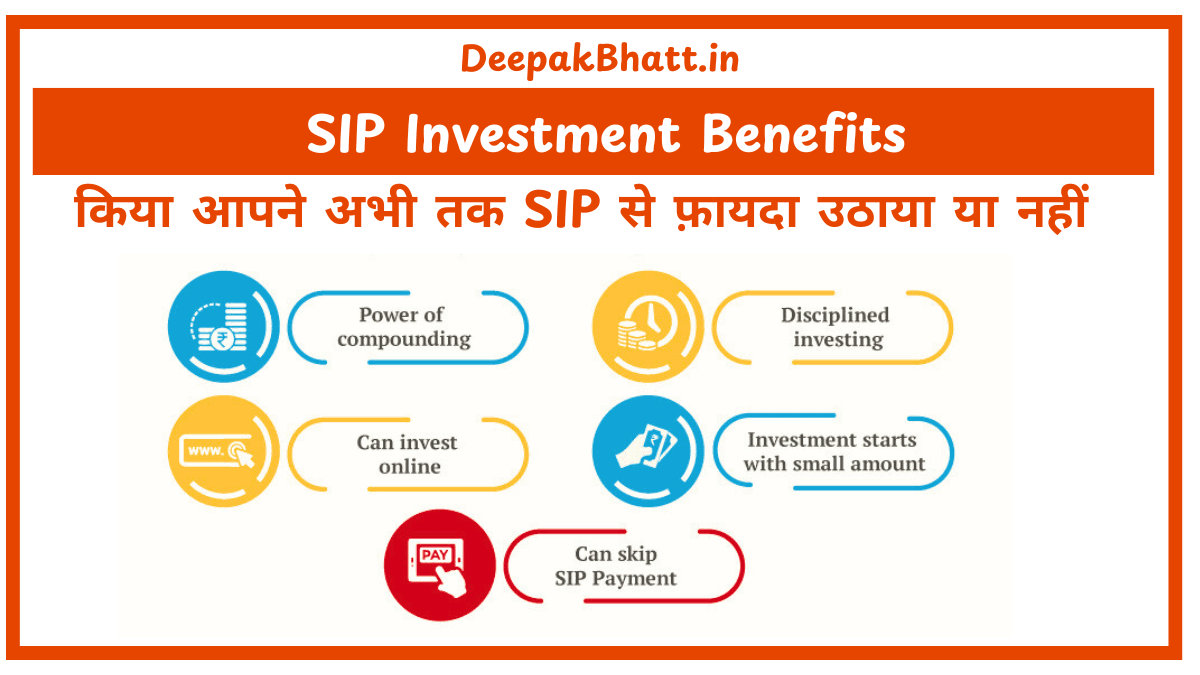5G Technology In the ever-changing landscape of telecommunications
The arrival of 5G technology stands out as a revolutionary force, poised to reshape our connectivity, communication, and digital experiences.
As the fifth generation of mobile networks, 5G goes beyond its predecessors, introducing unprecedented speed, reliability, and transformative capabilities.
Marketing Psychology: How To Become A Master Of Influence
TikTok Marketing: Grow Your Account & Master TikTok Ads
In this article, we will delve into the intricacies of 5G technology, exploring its key features, potential applications, and the profound impact it is set to have on various industries.
The Future of AI: A Comprehensive Guide
Navigating Number Systems: Converting Octal to Decimal
- 1 1. Understanding 5G Technology: The Evolution of Connectivity
- 1.1 2. The Need for Speed: Unprecedented Data Rates
- 1.2 3. Low Latency: Redefining Real-Time Communication
- 1.3 4. Massive Connectivity: The Internet of Things (IoT) Revolution
- 1.4 5. Transformative Applications: Unlocking Innovation
- 1.5 5.1 Healthcare: Revolutionizing Remote Care
- 1.6 5.2 Autonomous Vehicles: Paving the Way for Self-Driving Cars
- 1.7 5.3 Smart Cities: Enhancing Urban Living
- 1.8 5.4 Manufacturing: Enabling Industry 4.0
- 1.9 5.5 Enhanced Mobile Experiences: Augmented Reality (AR) and Virtual Reality (VR)
- 1.10 6. Challenges and Considerations: Navigating the 5G Landscape
- 1.11 7. The Future of Connectivity: A Glimpse Beyond 5G
- 1.12 The Evolution of 5G Technology:
- 1.13 Impact on Industries:
- 1.14 Challenges and Considerations:
- 1.15 Conclusion:
1. Understanding 5G Technology: The Evolution of Connectivity
At its core, 5G technology signifies the next step in wireless communication evolution.
Expanding upon the groundwork laid by 4G LTE networks, 5G promises faster data speeds, lower latency, and the capacity to connect numerous devices simultaneously.
The key pillars of 5G technology include enhanced mobile broadband (eMBB), ultra-reliable low-latency communications (URLLC), and massive machine-type communications (mMTC), collectively unlocking a new era of connectivity.
2. The Need for Speed: Unprecedented Data Rates
One standout feature of 5G is its remarkable data speed. While 4G networks set the stage for faster internet on mobile devices, 5G takes this to a new level.
With theoretical peak data rates exceeding 10 gigabits per second (Gbps), 5G has the potential to provide data speeds up to 100 times faster than 4G.
This rapid transfer of data allows for seamless streaming, faster downloads, and an enhanced overall user experience.
3. Low Latency: Redefining Real-Time Communication
Reducing latency, or the time it takes for data to travel between devices, is another hallmark of 5G technology.
While 4G networks typically have a latency of around 30 to 50 milliseconds, 5G aims to achieve latency as low as 1 millisecond or even less.
This near-instantaneous communication is crucial for applications demanding real-time responsiveness, such as online gaming, virtual reality (VR), and remote surgery.
4. Massive Connectivity: The Internet of Things (IoT) Revolution
Beyond individual users, 5G is designed to support the exponential growth of connected devices in the Internet of Things (IoT) ecosystem.
With the capacity to handle a massive number of simultaneous connections, 5G enables a more interconnected world where devices communicate seamlessly.
This has significant implications for smart cities, autonomous vehicles, industrial automation, and various other sectors relying on a dense network of interconnected devices.
5. Transformative Applications: Unlocking Innovation
The enhanced capabilities of 5G open doors to transformative applications across diverse industries:
5.1 Healthcare: Revolutionizing Remote Care
5G’s low latency and high bandwidth revolutionize remote patient care and telemedicine, allowing surgeons to perform complex procedures remotely and providing quality healthcare through virtual consultations in remote areas.
5.2 Autonomous Vehicles: Paving the Way for Self-Driving Cars
Crucial for autonomous vehicles, 5G’s low-latency communication enables real-time communication among vehicles and infrastructure, leading to safer navigation, reduced accidents, and transformed transportation.
5.3 Smart Cities: Enhancing Urban Living
Playing a pivotal role in smart city development, 5G facilitates efficient traffic management, waste disposal, street lighting, and environmental monitoring, forming the backbone of interconnected urban systems.
5.4 Manufacturing: Enabling Industry 4.0
In manufacturing, 5G powers advanced automation and robotics, facilitating seamless communication among connected machines, resulting in increased efficiency, predictive maintenance, and a more agile production process.
5.5 Enhanced Mobile Experiences: Augmented Reality (AR) and Virtual Reality (VR)
5G’s high data speeds and low latency enhance AR and VR experiences, making them more accessible and compelling, ranging from immersive gaming to interactive educational applications.
While 5G promises vast benefits, its deployment comes with challenges. Infrastructure requirements involve the installation of a dense network of small cells, raising concerns about potential health and environmental impacts. Regulatory and spectrum allocation challenges also accompany the initial rollout of 5G in various regions. Security is critical, given the increased attack surface with a growing number of connected devices, necessitating robust measures against cyber threats.
7. The Future of Connectivity: A Glimpse Beyond 5G
As 5G deployment progresses globally, researchers and industry experts contemplate the future with the emergence of 6G on the horizon.
While 5G focuses on enhancing mobile broadband, 6G envisions pushing boundaries further, integrating technologies like artificial intelligence, holographic communication, and advanced energy efficiency.
In conclusion, 5G technology is a transformative force transcending traditional notions of connectivity.
Its impact extends beyond faster downloads and smoother streaming, reaching into realms such as healthcare, transportation, manufacturing, and more.
As 5G networks continue to roll out globally, the possibilities for innovation and advancement are boundless, ushering in an era where connectivity is not just fast but a catalyst for unprecedented technological evolution.
In the rapidly evolving telecommunications landscape, the imminent arrival of 5G technology heralds a new era of connectivity.
As the fifth-generation wireless technology, 5G not only promises faster internet speeds but also transformative impacts on various industries.
In this article, we will delve into the key aspects of 5G technology and explore its benefits in communication, business, healthcare, and other features.
The Evolution of 5G Technology:
Speed and Latency:
5G technology brings a significant leap in data speeds, offering download speeds several times faster than its predecessor, 4G. Additionally, it ensures reduced latency, minimizing delays in data transmission and allowing real-time applications and services to be more responsive.
Enhanced Capacity:
With increased bandwidth, 5G can support a vast number of connected devices simultaneously. This expanded capacity paves the way for the Internet of Things (IoT) to flourish, creating a more interconnected world.
Impact on Industries:
Telecommunications and Networking:
The telecommunications industry undergoes a radical transformation with 5G, enabling providers to deliver high-quality services with increased efficiency. The deployment of small cells and the use of millimeter-wave spectrum contribute to building a more robust and extensive network infrastructure.
Healthcare Revolution:
In healthcare, 5G facilitates remote patient monitoring, telesurgery, and quick access to medical records. The low latency and high bandwidth enable healthcare professionals to collaborate in real-time, ultimately improving patient care and outcomes.
Autonomous Vehicles and Smart Cities:
5G plays a pivotal role in the development of autonomous vehicles and smart cities. The low-latency connectivity allows for instantaneous communication between vehicles, traffic lights, and infrastructure, enhancing safety and efficiency on the roads.
Manufacturing and Industry 4.0:
Industries benefit from the deployment of 5G through improved automation and efficiency. The low latency is crucial for real-time monitoring and control of manufacturing processes, contributing to the realization of Industry 4.0.
Challenges and Considerations:
Infrastructure Investment:
The rollout of 5G demands substantial infrastructure investment. Countries and companies need to invest in upgrading existing networks and deploying new infrastructure, posing financial challenges and logistical considerations.
Security Concerns:
The increased connectivity also raises cybersecurity concerns. As more devices become interconnected, the risk of cyber attacks is heightened, necessitating robust security measures to safeguard against potential threats.
Conclusion:
In the realm of technology, 5G is poised to bring about remarkable benefits, from enhanced connectivity to transformative applications across industries.
However, challenges such as cybersecurity and substantial infrastructure investments must be addressed.
The balance between the potential advantages and the need for strategic measures will determine how effectively 5G contributes to the evolution of our digital landscape. What are your thoughts on these challenges and opportunities?
आप सभी का मेरी वेबसाइट पर स्वागत है। मैं Blogging, earning money online और अन्य Categories से संबंधित Post Updates करता रहता हूँ। यहाँ आपको बहुत अच्छी Post पढ़ने को मिलेंगी। जहाँ से आप बहुत सारा Knowladge बढ़ा सकते हैं। आप हमारी website और Social Media के माध्यम से हमसे जुड़ सकते हैं। धन्यवाद







